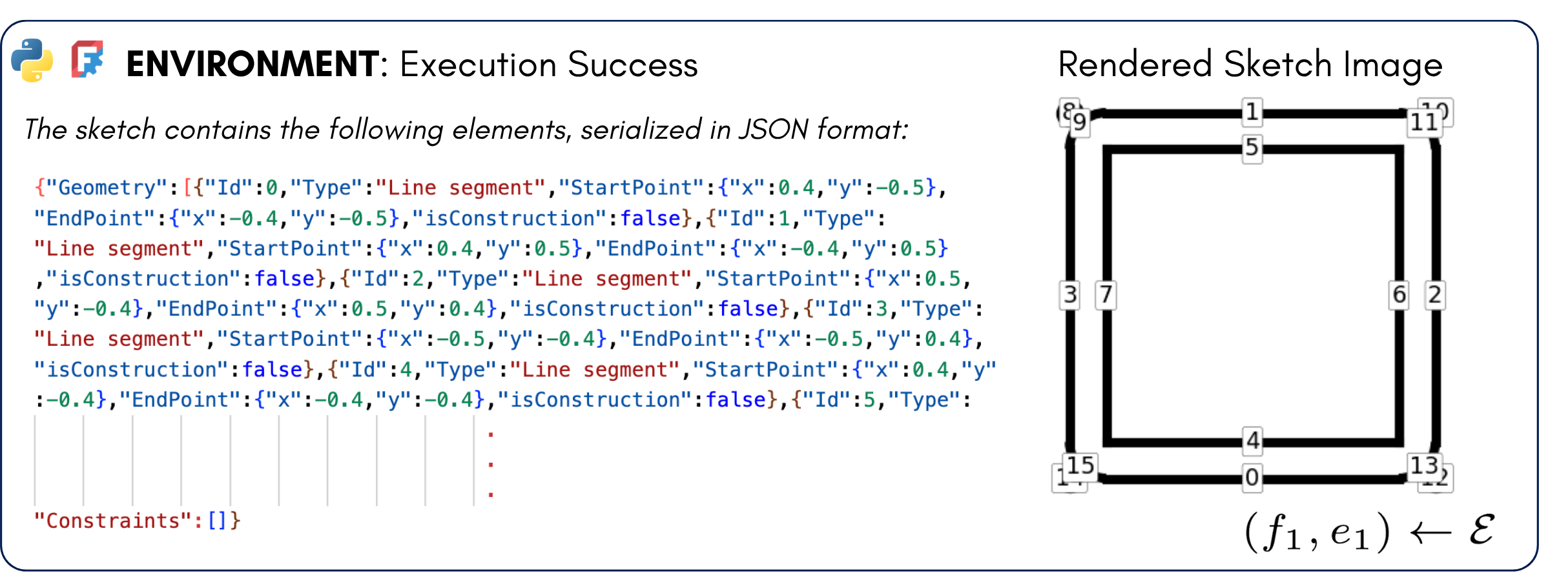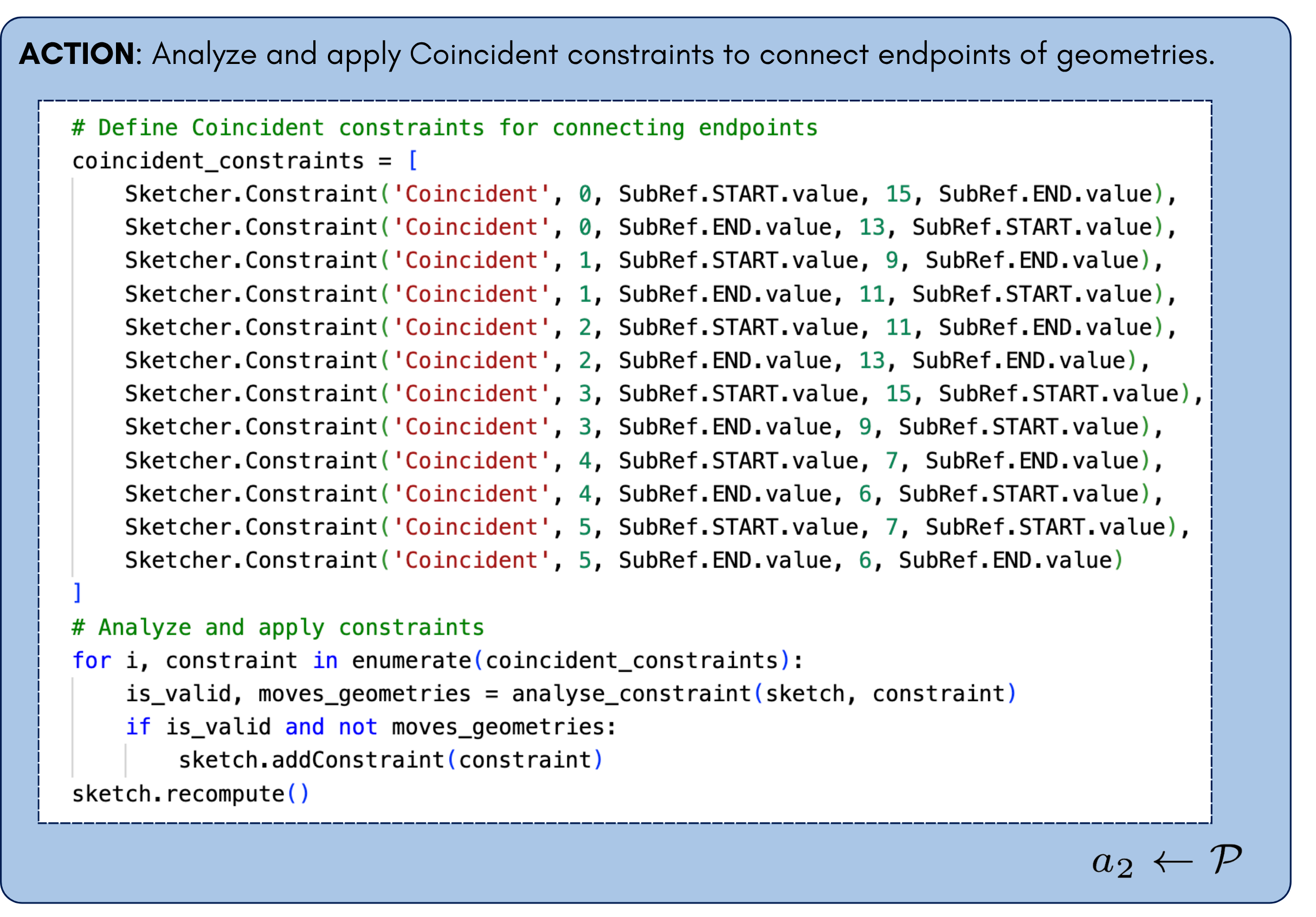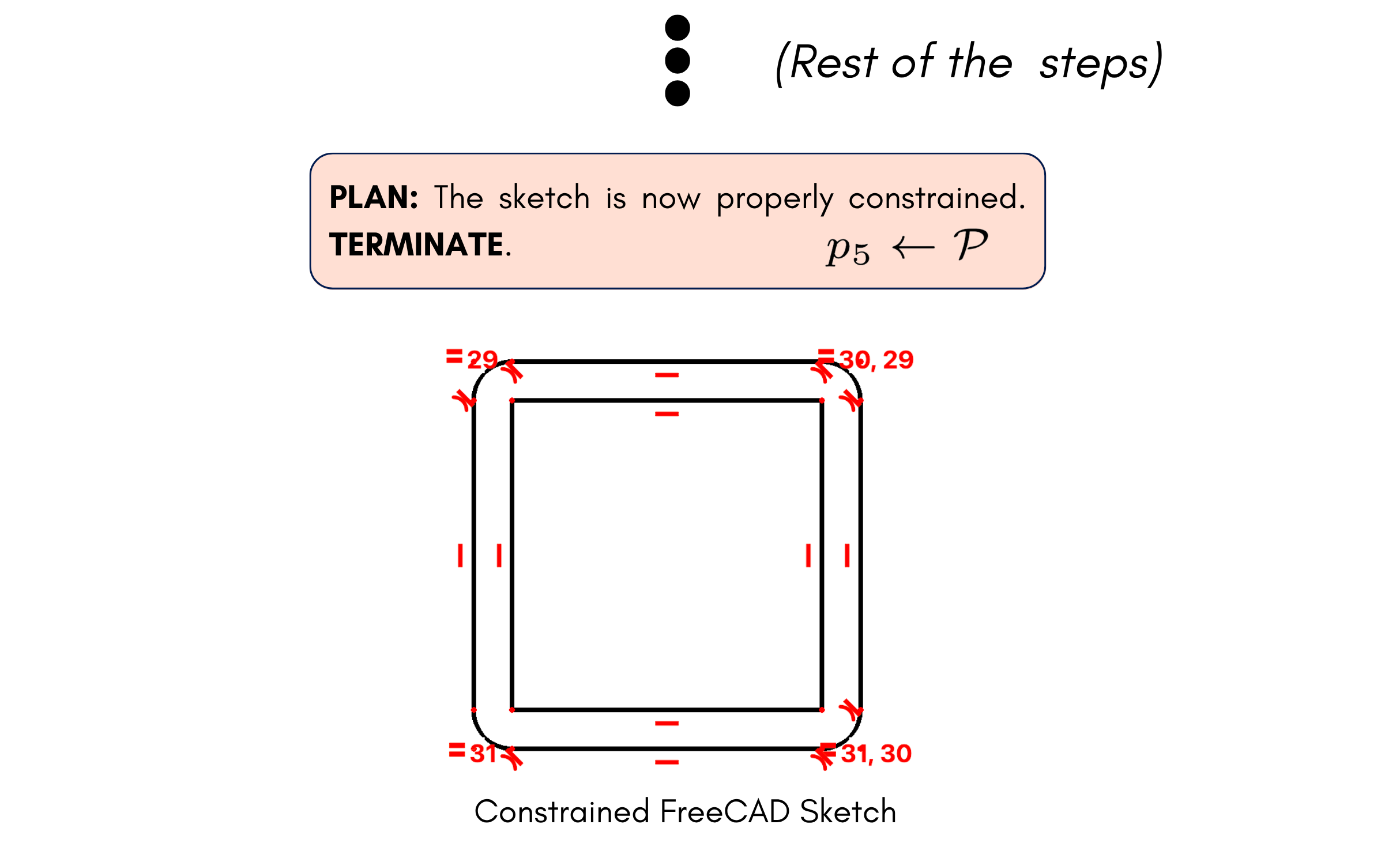We propose CAD-Assistant , a general-purpose CAD
agent for AI-assisted design. Our approach is based on
a powerful Vision and Large Language Model (VLLM) as
a planner and a tool-augmentation paradigm using CADspecific tools. CAD-Assistant addresses multimodal
user queries by generating actions that are iteratively executed on a Python interpreter equipped with the FreeCAD
software, accessed via its Python API. Our framework is
able to assess the impact of generated CAD commands
on geometry and adapts subsequent actions based on the
evolving state of the CAD design. We consider a wide range
of CAD-specific tools including a sketch image parameterizer, rendering modules, a 2D cross-section generator, and
other specialized routines. CAD-Assistant is evaluated
on multiple CAD benchmarks, where it outperforms VLLM
baselines and supervised task-specific methods. Beyond
existing benchmarks, we qualitatively demonstrate the potential of tool-augmented VLLMs as general-purpose CAD
solvers across diverse workflows.









